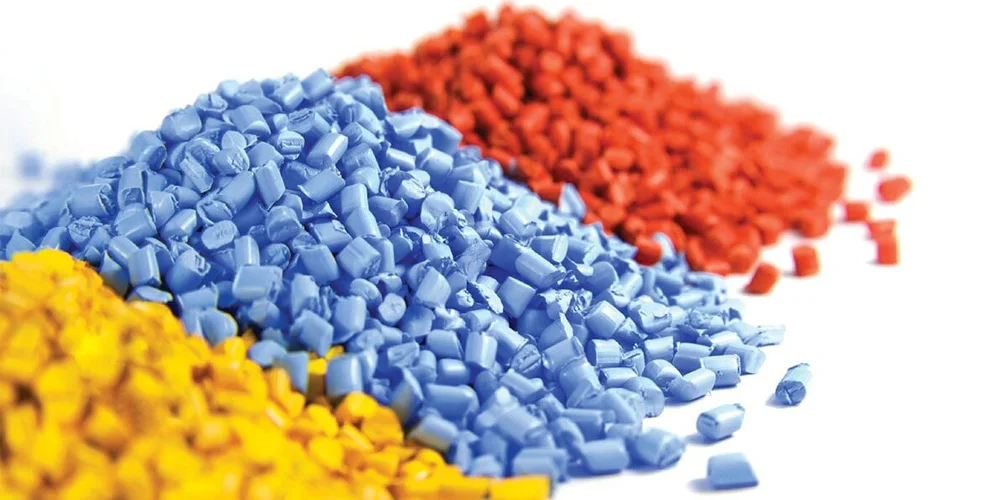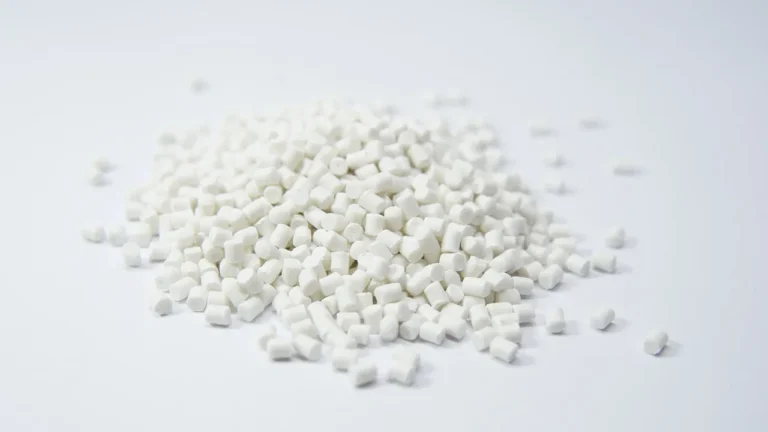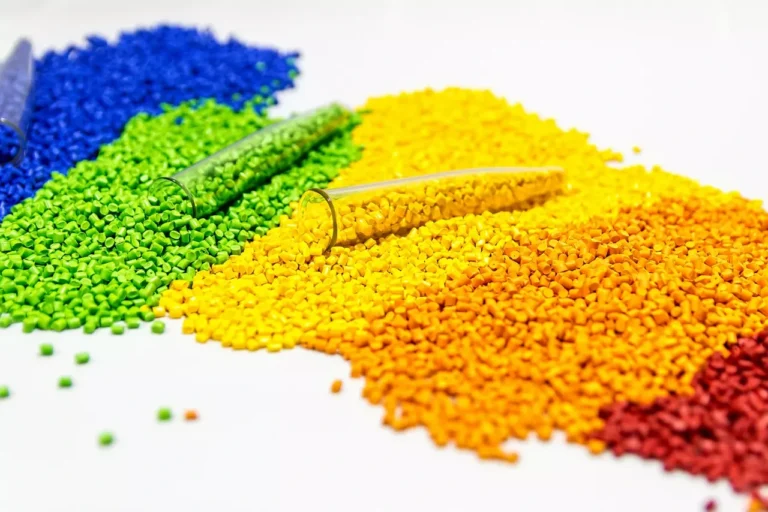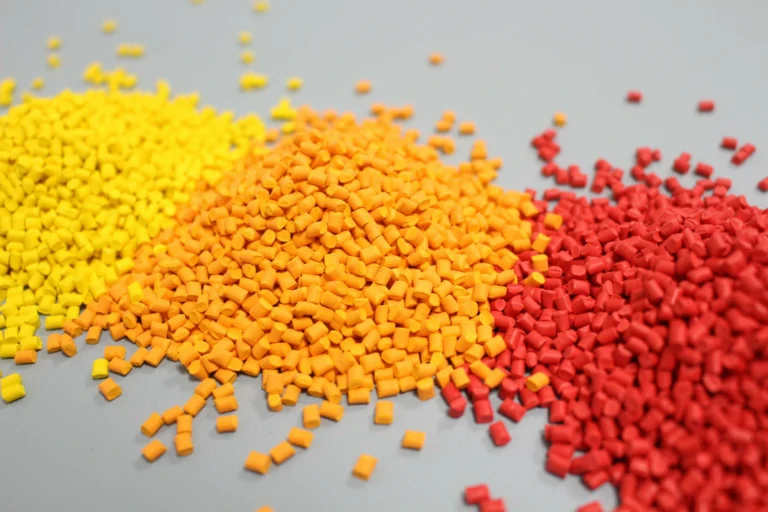In this vibrant world, we can see colorful plastic products, car interiors, and electronic device casings everywhere. All of these products are produced using a material we will discuss today: color masterbatch. Color masterbatch serves as the foundational colorant for color matching in various industries such as plastic products, synthetic fiber textiles, and automotive accessories.
By combining different carriers and base materials, it forms color masterbatch particles with distinct properties, which are then applied across various industries. Today, we will discuss the production of color masterbatches and their core advantages.
Core Advantages of Color Masterbatches
Color masterbatches are granular concentrates produced by physically blending high-concentration pigments or additives with carrier resins through processing. Their core value lies in their pre-dispersed structure, which ensures uniform distribution of pigments within plastic substrates, resulting in consistent finished product colors.

This technology reduces raw material waste by 30%-50%, replaces powdered raw materials with granular forms, and reduces dust concentration in production environments by over 90%, meeting environmental standards such as RoHS. Beyond basic coloring functions, it can be combined with UV resistance, flame retardancy, and other properties to achieve multifunctional upgrades for plastic products, making it an efficient solution for the plastic industry and related fields.
Color Masterbatch Production Process
Color masterbatch manufacturing is completed through several key processes: raw material pretreatment → blending → extrusion → molding → screening. Let’s take a detailed look at the requirements and operations for each step.
Raw Material Pretreatment
Reducing the use of substandard raw materials improves process stability and product
Methods:
Pigment processing: Use an air jet mill to grind agglomerated pigments to a D50 < 10 μm. For organic pigments, add surface modifiers.
Carrier Resin/Additive Processing: Dry the carrier resin in a hot air circulation oven at 80±5°C for 2 hours to ensure moisture content ≤0.03%. Screen processing additives through a 60-mesh sieve to remove impurities.
Key Indicators: Use a laser particle size analyzer to measure pigment particle size distribution, and use the Karl Fischer method to measure resin moisture content.
Weighing
Formulation error is controlled within ±0.1%
Method:
Use a high-precision loss-in-weight feeder (accuracy 0.05% FS) to layer feed materials according to the formulation ratio: first add carrier resin (60% of total); then add dispersants (polyethylene wax, etc., 8–12%); finally add pigments/functional additives.
Quality control: Calibrate the weighing equipment (using weights) for each batch, and implement a dual-person verification system.
Blending
Initially perform material dispersion and temperature activation
Method:
Use a paddle-type high-speed mixer (volume 500–2000 L),
Process parameters:
Speed: Low speed 300 rpm (1 min) → high speed 1200 rpm (5–8 min)
Temperature control: Heat the material to 95–110°C via friction heat (external heating strictly prohibited)
Add an anti-static agent (0.1–0.3%) to prevent material adhesion to the walls
Result criteria: Material flows like sand, temperature reaches the set value ±2°C
Melt extrusion
Pigment dispersion and shaping
Method:
First-stage dispersion: Co-rotating twin-screw extruder (L/D ≥ 40:1)
Temperature zone control: Feed section 170°C → compression section 190°C → homogenization section 210°C
High-shear screw combination: Kneading block angle 45° + reverse thread elements
Secondary plasticization: Single-screw extruder (L/D = 25:1)
Temperature setting: 200 ± 5°C throughout (to prevent thermal degradation)
Vacuum degassing: -0.08 MPa to remove volatiles
Underwater pelletizing
Obtain uniformly sized particles
Method:
Process control of three key parameters:
| Parameter | Standard Value | Adjustment Basis |
| Die Head Temperature | 200-220℃ | Melt viscosity |
| Cutter Speed | 800-1500 rpm | Pellet length requirement |
| Water Circulation Temperature | 40-60℃ | To prevent thermal deformation of pellets |
Cooling water must be circulated and purified through a titanium filter (5 μm precision)
Pellet size control: Diameter 2-4 mm, length 3-5 mm (Adjusted via blade spacing)
Dehydration, drying, screening, and packaging
Final product moisture content ≤0.05%
Methods:
Dehydration:
Centrifugal dehydrator (1200 rpm, removes surface water)
Vibrating fluidized bed (air temperature 80°C, air velocity 1.5 m/s)
Rotating dryer drum (nitrogen-protected, dew point -40°C)
Screening:
Upper screen mesh: Φ4 mm to remove oversized particles
Lower screen mesh: Φ1.8 mm to remove debris
Packaging specifications: Aluminum foil composite bag with nitrogen-sealed packaging
Through the above process flow, we can obtain different color masterbatches. After understanding how color masterbatches are produced, I will provide a formulation table for reference and learning.
High-Quality Masterbatch Begins with Precise Formulation:
| Component | Proportion Range | Key Function | Common Examples |
| Pigment/Additive | 20%-50% | Providing coloration or special functions | Phthalocyanine Blue, Titanium Dioxide, Carbon Black |
| Carrier Resin | 40%-70% | Carrying pigments & compatibilizing with base polymer | LDPE/LLDPE (Universal carriers) |
| Dispersant | 5%-15% | Promoting uniform pigment distribution | Polyethylene wax, Stearates |
| Processing Aid | 1%-5% | Enhancing rheology & thermal stability | Silicone-based additives, Antioxidants |
Conclusion
Through the above content, I believe that many people who are interested in how color masterbatches are produced now have a clear understanding and knowledge of the process. We are a professional manufacturer of color masterbatches, with years of experience in international color matching services and solutions for different industries. If you have any color matching concerns, please contact us now. We have a professional team that can provide you with customized solutions. We look forward to working with you.






